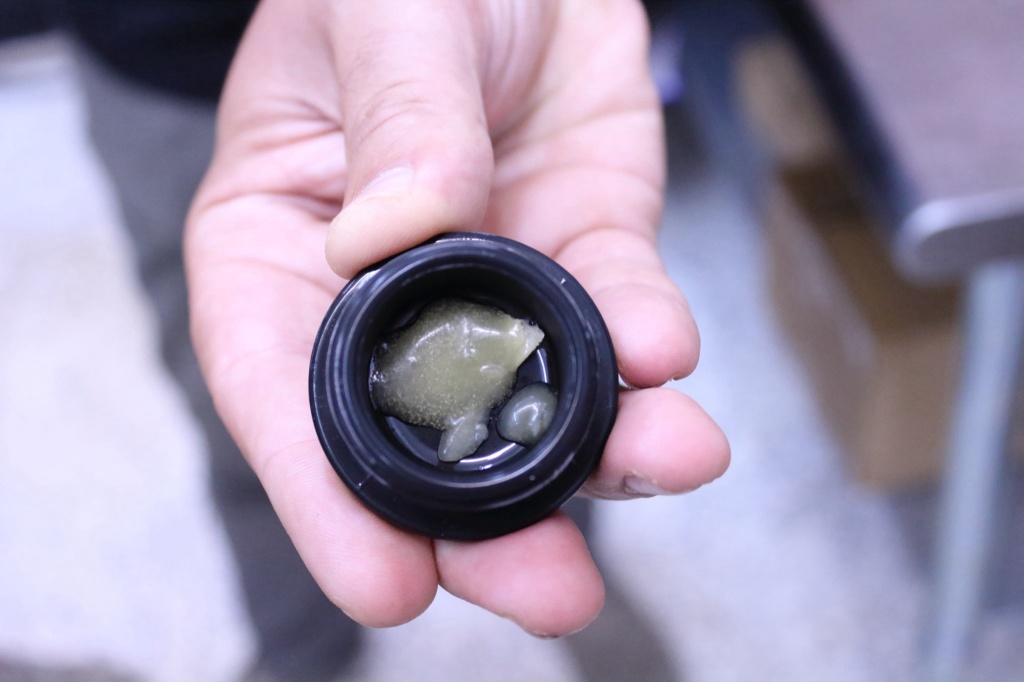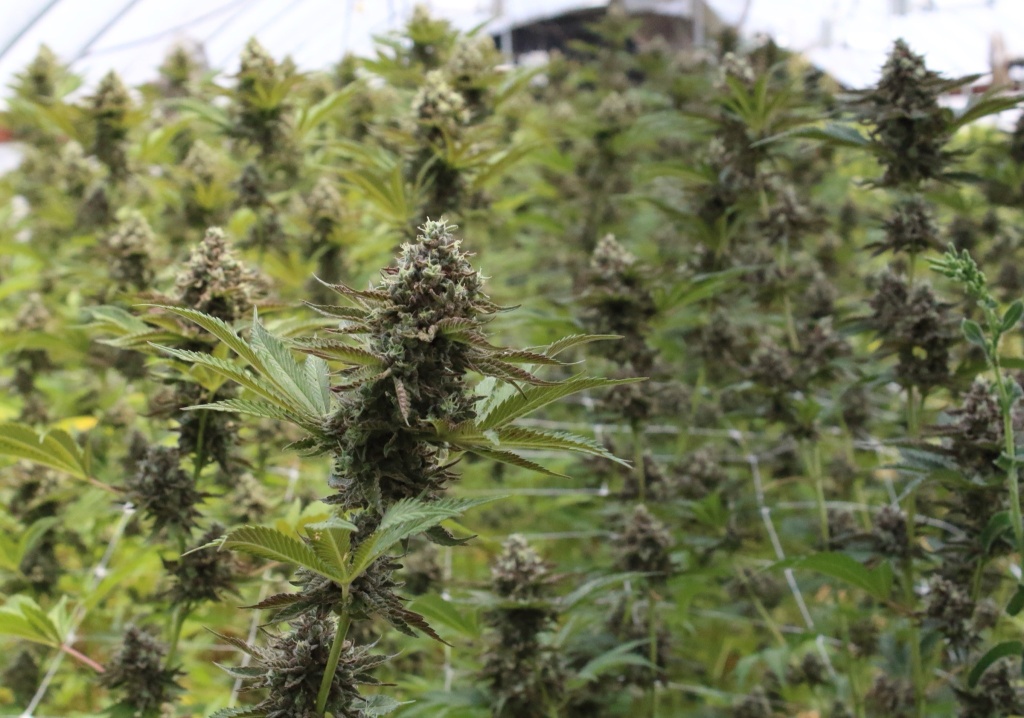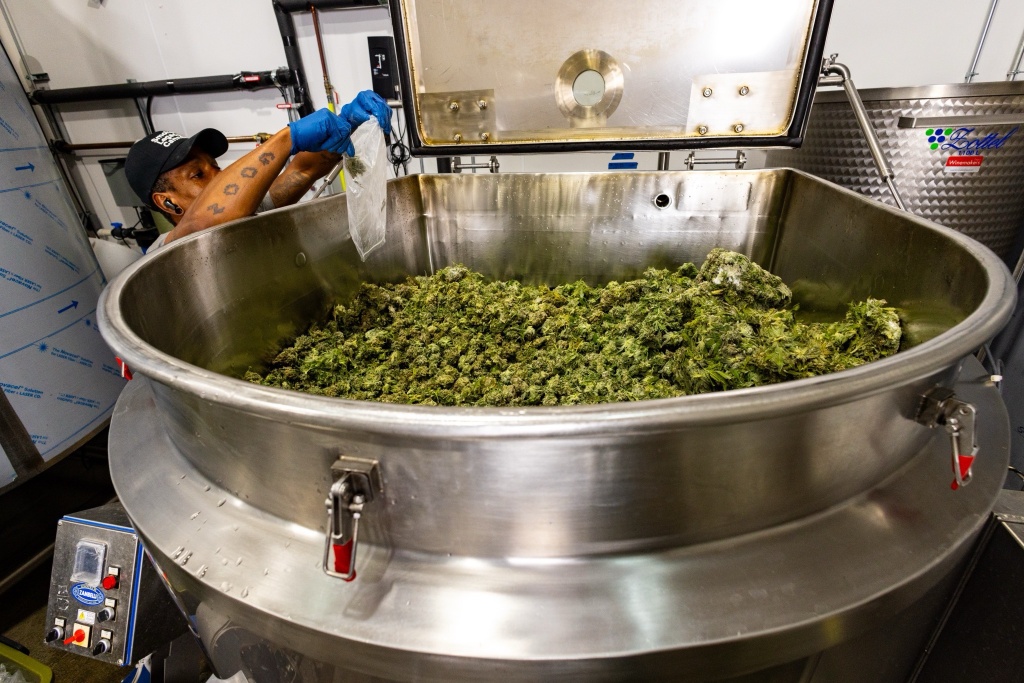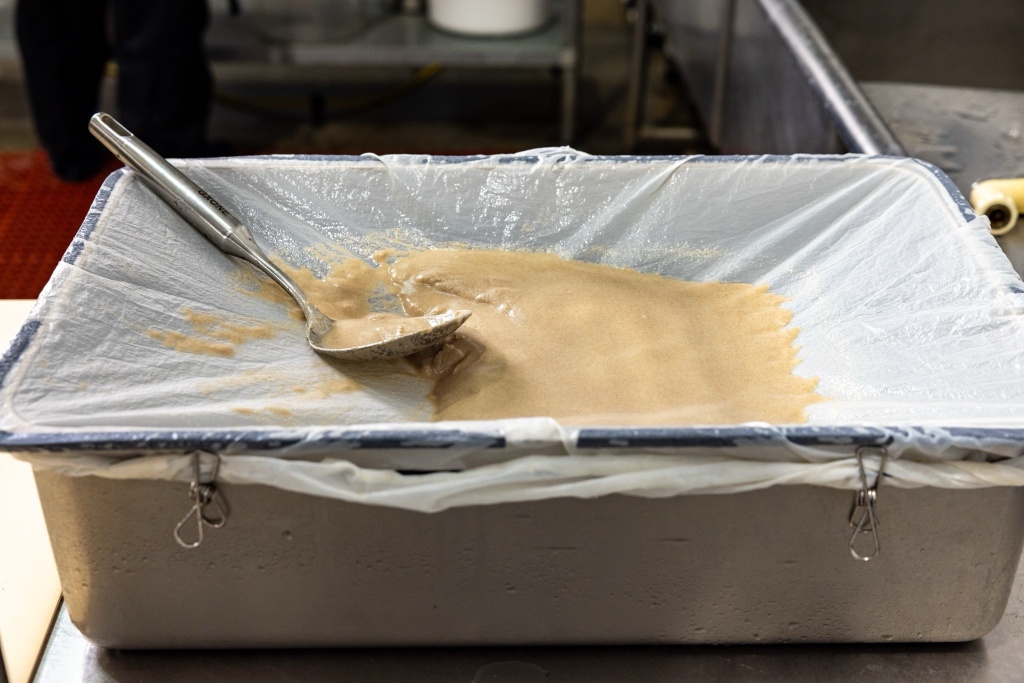Harvest hash report: 2025 could be Emerald Triangle’s best

The wine industry on California’s North Coast is facing “one of the most challenging vintages in more than a decade” due to late-season rains, poor weather, and a weak grape market. On the other hand, this year is shaping up to be an amazing harvest for hashmakers in the same region, who are seeing massive plants and are pushing some into the season later than expected. The result is more resin production, leading to better extract yields.
GreenState spoke with two cannabis cultivators and two hashmakers in the Emerald Triangle to gauge the harvest progress, as well as a tour company that partners with one of the farmers.
RELATED: From Humboldt to the Heartland: Emerald Triangle cannabis finds new life
Organic Hashes From Mendocino’s Tall Trees
As the CEO of Tall Tree Society (TTS), Shane Gary grows the flower he turns into high-quality hashes in Mendocino’s Redwood Valley. After growing up in Michigan and working his way through grow houses and basements in Colorado and Montana, Gary made it to California.
Gary said he “came to the Emerald Triangle for the cannabis, unparalleled growing conditions, and passionate cannabis community.” In addition to growing, Gary has been producing bubble hash and a range of other extractions, including dry sift and butane hash oil (BHO), for over 16 years.
“I always find myself coming back to just using ice and water, “ Gary said. “Fresh-frozen solventless techniques can capture the plant’s dimensions unlike anything else, revealing the taste and flavor of the flower before it dried.”
Thankfully, it has been “a wonderful growing season in the Redwood Valley,” and there have not been any wildfires close enough to spoil the flavor of Gary’s flower or hash.
“This year, my favorite hash strains are all over the place,” said Gary. “Grape Cream Cake, Strawberry Banana, Hashburger, Papaya Juice, Rotten Papayas, and Strawberry Crisp.”

Gary said all of his favorites are “wonderful washers that produce beautiful extracts with a diverse range of flavors.” Harvest has been going great, but isn’t done as they will “be pushing the greenhouses later into the season than initially expected.” Gary is really excited about his rosins and some of the “old-school terpinolene strains” he is growing, like Lavender Jack and Jack Herer.
RELATED: E rig devices that’ll have you dabbing weed like a pro
Gary is passionate about protecting the environment, and TTS is both Sun+Earth certified and registered as organic input material with the California Department of Food and Agriculture
(CDFA).
“I have always loved spending time outside, which has led to a deep appreciation of the world around me,” he said. “Seeing how much the world has changed in my lifetime is an inspiration for action.”
For Gary, “the world needs small organic farms now more than ever.”
Traditional Hashes Made in the Heart of Humboldt
“One of the many things we can’t control in farming is the weather,” said Dylan Mattole, the owner and operator of Mattole Valley Sungrown (MVS) in Humboldt’s Mattole Valley. “We grow entirely outdoors, so I try to not fight the weather and take it as it comes.”
Thankfully, the weather this year has been fairly mild, without any prolonged heatwaves. Mattole was grateful that while “it hasn’t been the glorious sunshine we all appreciated last season, it also hasn’t been exceptionally wet.”
While Gary at TTS grows his own flower to make hash, Nasha Hash (Nasha), based out of Arcata, partners with various growers to obtain the terpene-rich flowers they use to make top-tier concentrates, and Mattole is one of the leading growers. Like TTS, MVS is Sun+Earth certified, and Mattole grows using regenerative practices in native soil.
As you would expect from a mild growing season with regular rains, Mattole has some very healthy plants on the farm ready to be harvested. He’s most excited to release some of the “unique” cultivars growing on the farm, like MVP 23, a cross with their Purple Papaya. Other standout cultivars include Mazapan, “the now famous Whitethorn Rose,” and their newest addition, Paradise Rose. Last but not least is their Super Boof, which Mattole says “is awesome,” and Nasha will be turning some of it into hash.

For Barron Lutz, the CEO of Nasha, his current work is the culmination of a life dedicated to traditional hashmaking. Lutz spent many years in India, where he was introduced to making charas (hand-rolled hash).
“You hike for several hours to get there,” said Lutz. “Usually people would hike up, buy kilos and leave, but I stayed up there with them in the fields to see the process.”
While he produces a variety of products at Nasha, Lutz’s current favorite is their rosin vape.
“I have been combusting cannabis for a while, since I was 13, and I am close to 40 now,” said Lutz. “The vape is nice because it is not as heavy on the lungs, but it is still very true to the plant.”
RELATED: 6 hash trends coming to your sesh from Puffcon 2025
While some hashmakers use a variety of processes, Nasha sticks to “water, heat, and pressure,” Lutz added that it is “pretty amazing that we can use one base process and get so many different results.”
“I am excited to see the continued evolution of hash and the solventless revolution,” said Lutz. “People are demanding hashes made without hydrocarbons, very similar to extra virgin olive oil.”
For Lutz, “there’s nothing you can hide in hash,” in other words, whatever happened to that plant becomes evident through hashmaking.
“A lot of beautiful serendipitous things need to come together to make a good piece of hash, which adds something artisanal to the product you otherwise couldn’t get,” Lutz concluded. “I feel like Italian olive oil makers are artisans, and hash shares that with them, like with winemaking.”
Getting Hands-On With Hashmaking
For the past several years, Victor Pinho, the CEO of Emerald Farm Tours (EFT), has been regularly taking packed tour buses of the canna-curious and cannasseurs from the Bay Area to the Emerald Triangle. One of his regular destinations is TTS, which Pinho describes as a “verticals tour” that shows people multiple licensed activities all in one place.
RELATED: How to explore the famed Emerald Triangle during cannabis harvest season
“It is a rich educational experience that takes you from the plant’s growth to the final hash product,” said Pinho. “You get a true sense of the regenerative journey of Shane’s products.”
If participants come at the right time of year, they can even “get hands-on with the hashmaking process,” like how some vineyards allow people to punch down wine.

If you want to come check out Croptober for yourself next year, but don’t want to take your car up to the Emerald Triangle and down a dirt road to a cannabis farm, then EFT has you covered. While they don’t go as far north as Arcata, EFT regularly takes tour groups up to Mendocino. While California’s evolving climate is challenging wine production on the North Coast, so far, cannabis cultivators have been having a great growing season. Due to that perfect growing climate and the Emerald Triangle’s iconic place in cannabis history, it continues to attract new generations of cultivators and hashmakers from around the world.
Even if you can’t make it to a farm, enjoy the fruits of the harvest in a couple of months once they have been dried or turned into hash. If the reports from the Emerald Triangle are any indication, California dispensaries will soon be filled with high-quality extracts.